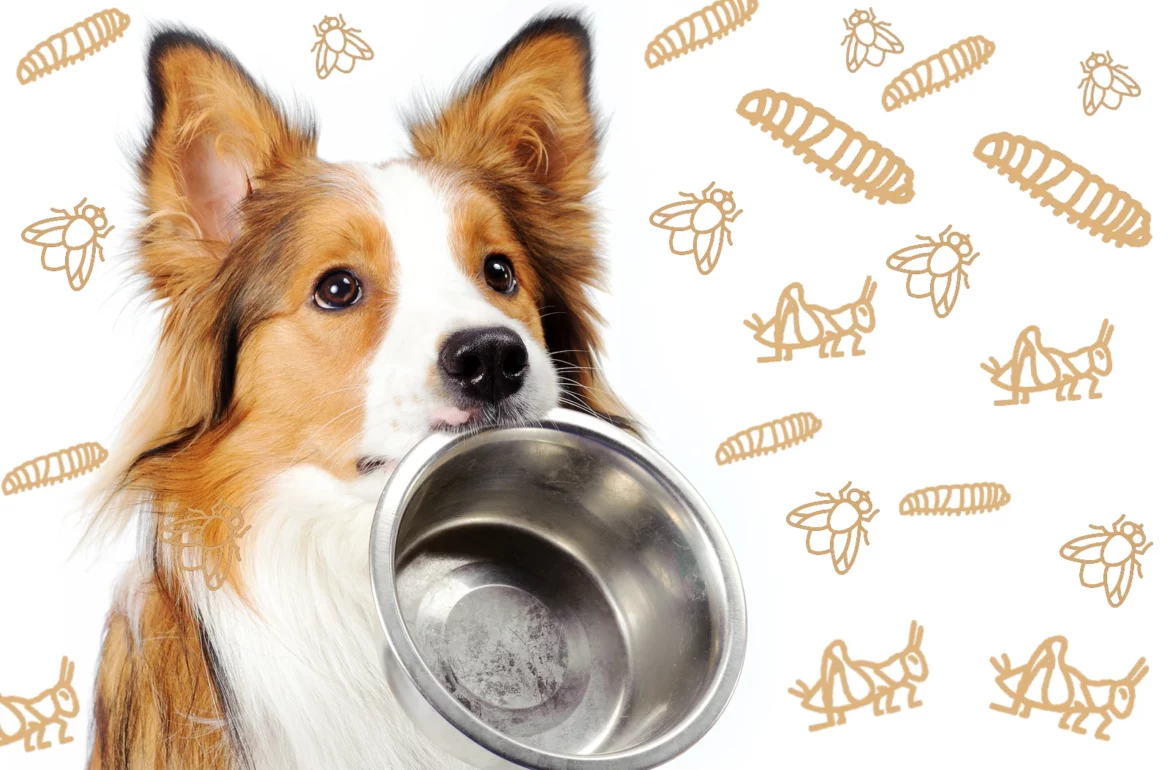How Insect Based Protein is Revolutionising Food for Our Pets

The insect farming industry has been abuzz about edible insects and how they are the next big source of sustainable protein for us and our pets. Considering that dogs and cats need sizeable amounts of protein in their diet, it is worth considering the pros and cons of insect-based protein for dogs and cats, and whether there may come a time when conventional farmed animals are substituted for insects.
A Sustainable Alternative
Using these little critters as food makes a lot of sense on many fronts. They require significantly lesser resources to cultivate and process in comparison to traditional livestock. In about 10 days, one ton or about 1000kg of insects can be cultivated using a conservative land area of around 20 square meters[1]. Compare this to cattle like cow; one cow that averagely weighs 544kg requires approximately 4047 square meters of land.
The cultivation of insect-based food produces a smaller amount of greenhouse gases including methane and nitrous oxide compared to cattle and pigs who are major contributors to these gases in the environment.
Zero Waste
Black soldier fly larvae that feed on food waste break the food waste down into frass, a by-product produced from their digestion[2]. Frass can be used as plant fertilizer for vegetables or as a soil amendment to adjust soil quality.
Chitin, a natural polymer found in the exoskeleton of insects has varied uses across the pharmaceutical and water purification industries[3]. Harnessing these co-products produced by the insects promotes a zero-waste, cyclical economy that can only have positive effects on the environment.
Provides Balanced Nutrition
Edible insects, such as black soldier fly larvae are a complete protein as they contain all nine amino acids, making them comparable to meat and high-quality fish meal.[4] Additionally, insects have vital fatty acids, vitamins, and minerals – crucial nutrients that are required in our dogs and cats’ diets.
In an insightful study published in the European Journal of Clinical Nutrition, their findings showed that “insects [such as crickets, palm weevil larvae and mealworms] contain values of between 9.96 and 35.2 grams of protein per 100 grams, compared with 16.8-20.6 grams for meat[5]”
Why Aren’t More Pet Owners Feeding Insects?
Feeding insects may seem gross to some because they are not typically part of our pet’s diet. It is more socially acceptable to use insects as feed for farmed animals.
Watching our cats play with an occasional fly before popping it into their mouths is amusing but having to feed them bugs like crickets or larvae is understandably stomach churning for some.
Legitimate concerns such as the risk of invoking an adverse allergic reaction in our pets caused by the consumption of these insects gives many pet owners pause for concern. Because of how novel insect protein is, some dogs and cats may not have developed the enzymes necessary to digest insect protein.
While commercial insect farms are typically safe, the contamination of insects due to anthropogenic factors is also another potential hazard. This can happen during the breeding, packaging, cooking, or feeding stage. Contaminants may include the presence of mould fungi, bacterial, heavy metals, and mycotoxins.[6]
However, it is worth considering that such contamination can happen to any other ingredient if there aren’t safe handling practices in place.
There is still a long road ahead before insect-based proteins get widely accepted in pet food. The nutritional value of insect protein as an ingredient makes it a viable and environmentally conscious choice for pet parents to consider for their furry companions, though more research, funding, and attention are needed to make insect-based proteins more mainstream.
Sources
[1] “Insect protein – A sustainable alternative” – Feed Additive, 12 October 2022 https://www.feedandadditive.com/insect-protein-a-sustainable-alternative/
[2] “Project using black soldier flies to break down food waste set to expand in Tampines” – The Straits Times, 13 September 2021 https://www.straitstimes.com/singapore/environment/project-using-black-soldier-flies-to-break-down-food-waste-set-to-expand-in
[3] “The insect industry: a sustainable model of circular economy?” – Alcimed, 10 May 2021 https://www.alcimed.com/en/alcim-articles/insect-breeding-industry-sustainable-model-circular-economy/
[4] Insect-based ingredients in pet food – UK Pet Food, 26 October 2022 https://www.ukpetfood.org/resource/insect-based-ingredients-in-pet-food.html
[5] “Are edible insects more or less ‘healthy’ than commonly consumed meats?” – National Center for Biotechnology Information, 16 September 2015 https://www.ncbi.nlm.nih.gov/pmc/articles/PMC4781901/
[6] “Insects in pet food industry”- MPDI, 10 June 2022 https://www.mdpi.com/2076-2615/12/12/1515/pdf



